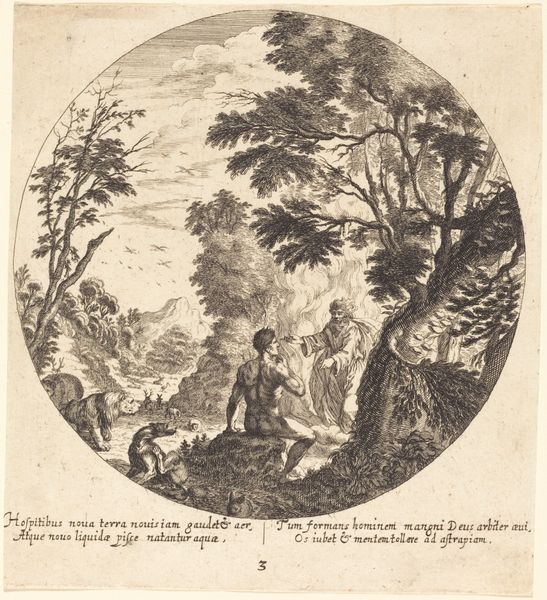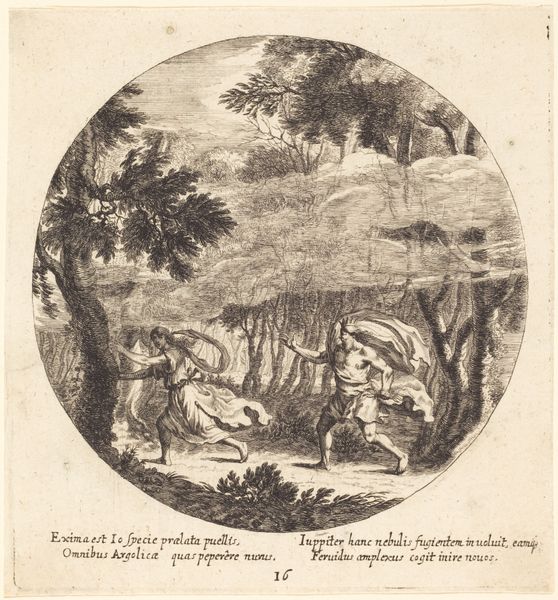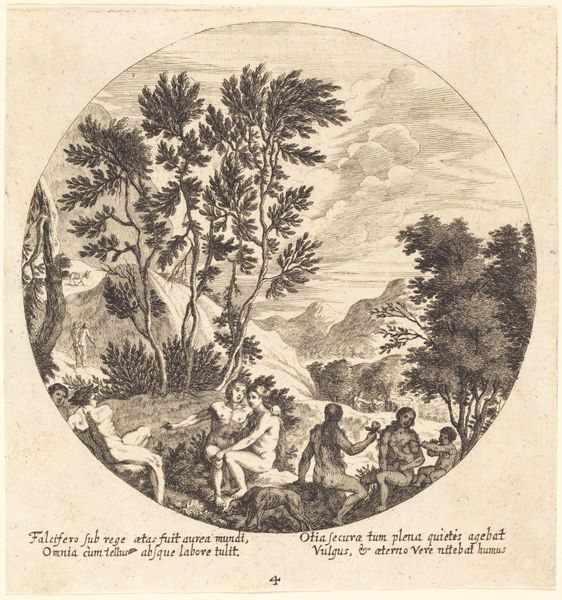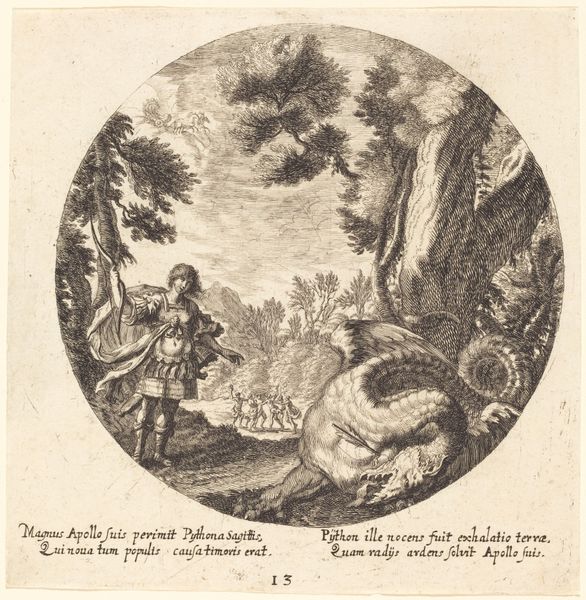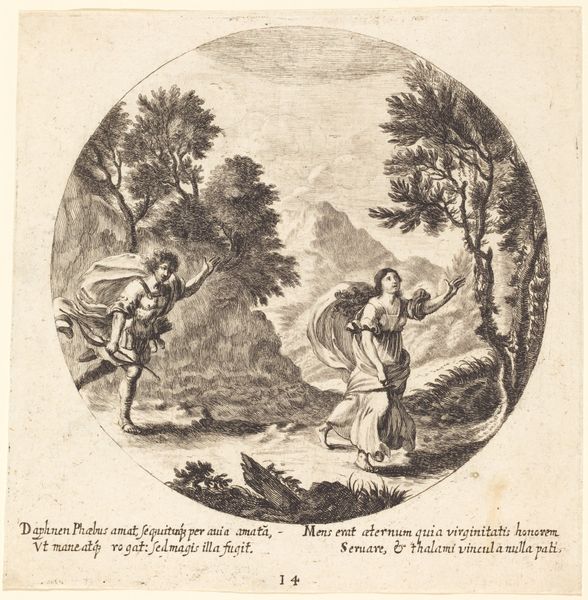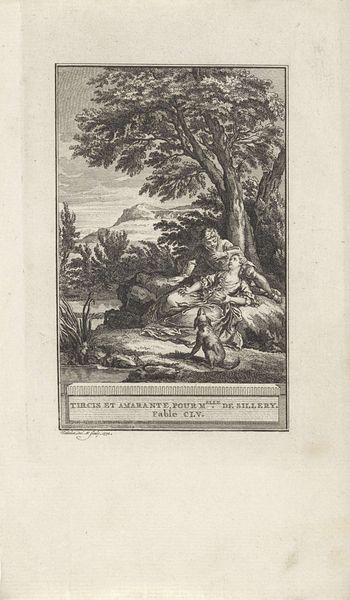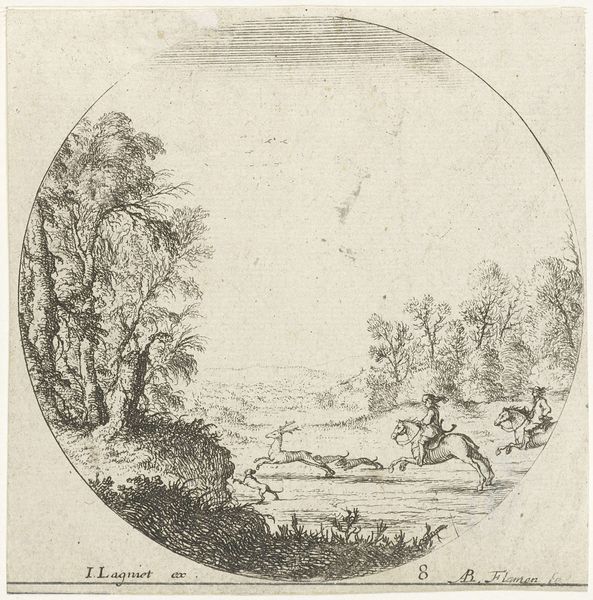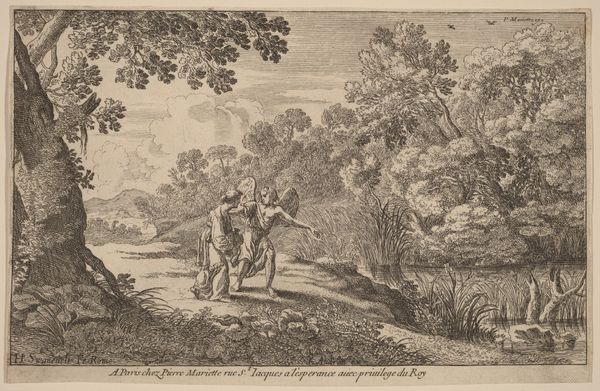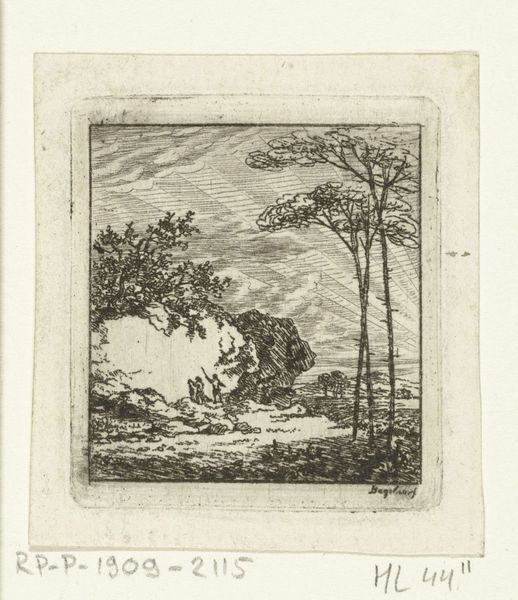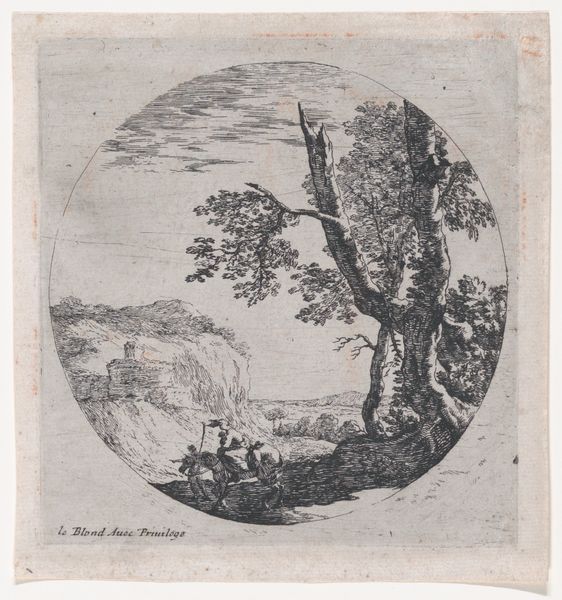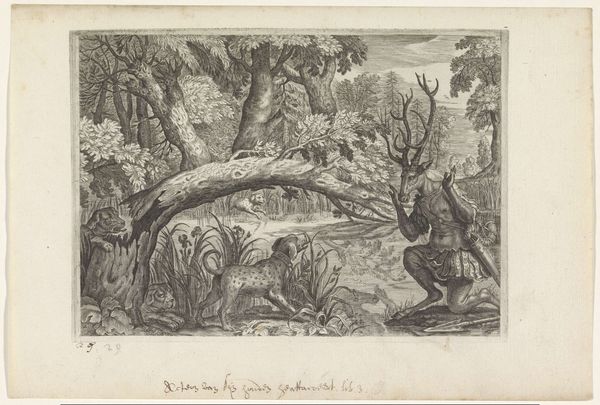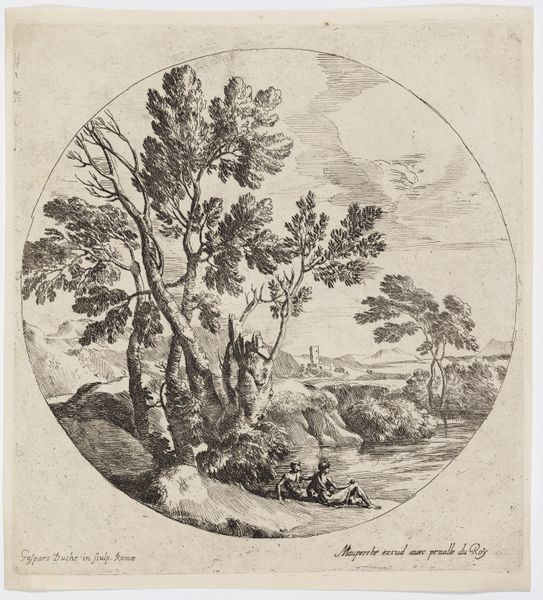
print, etching
#
allegory
#
baroque
# print
#
etching
#
landscape
#
figuration
#
history-painting
Dimensions: plate: 14.8 x 14.9 cm (5 13/16 x 5 7/8 in.) sheet: 14.9 x 15 cm (5 7/8 x 5 7/8 in.)
Copyright: National Gallery of Art: CC0 1.0
Editor: Here we have "Pan and Syrinx," an etching by Georg Andreas Wolfgang the Elder, dating back to 1665. It’s a scene filled with frantic energy. I’m particularly struck by the circular composition. What do you see when you look at this print? Curator: The roundel format immediately constrains our view, forcing a focused consideration of the internal relationships. The tonal gradations achieved through etching are quite compelling; note how Wolfgang uses a network of fine lines to generate variations in light intensity to distinguish form. This also produces interesting textural contrast between, say, the dense thicket of reeds, and the bodies of Pan and Syrinx. Editor: So, you're focusing on the interplay of light and shadow created by the technique itself. How does this interplay affect the way we understand the story? Curator: Precisely. The chiaroscuro lends a dramatic urgency to the chase. Consider how the varying line weights around the figures emphasizes their motion, a kind of graphic embodiment of Baroque dynamism. Do you agree that our attention is mainly directed at their interaction instead of the setting they are situated in? Editor: Definitely. The figures are clearly the focal point, despite the inclusion of landscape elements. But, beyond the drama, are there underlying elements, structural qualities, for instance, which would you consider the most pivotal to this composition? Curator: I would direct attention to the intentional disjunction between what Pan sees, what Syrinx's desires are and her fate, all of which speak to narrative strategies in Baroque art. Editor: I never considered that disjunction before. It is truly there. Seeing it now reshapes my appreciation for this image. Thank you! Curator: And I find that your focus on the narrative assists us in relating emotionally and empathetically to forms on the paper.
Comments
No comments
Be the first to comment and join the conversation on the ultimate creative platform.
